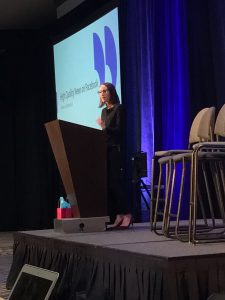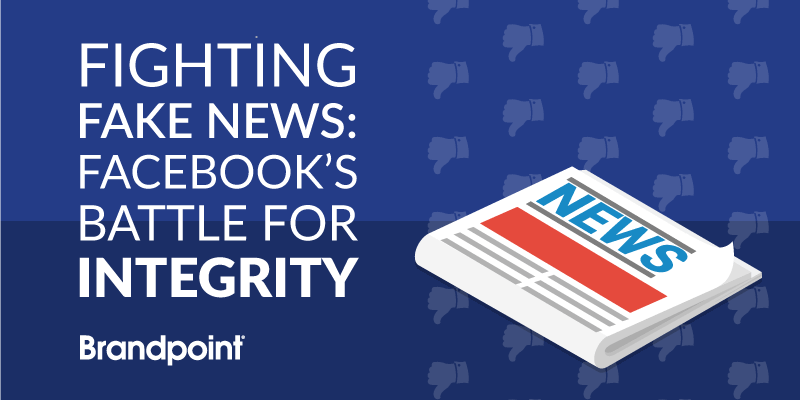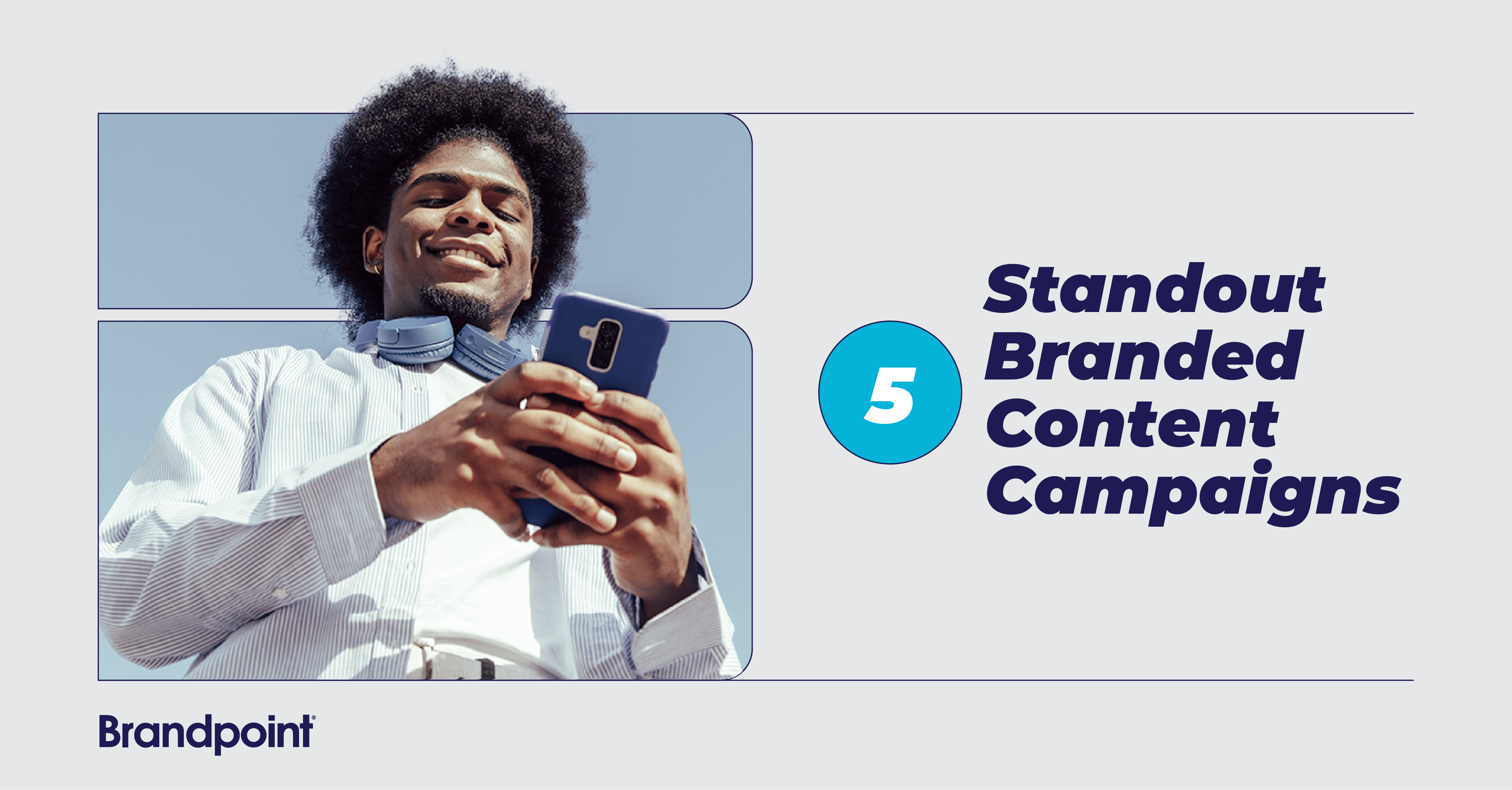Nothing is real, it seems. I attended a business conference recently — the Mega Conference for Key Executives in San Diego — and there was a fake attendee list for sale prior to the show. Welcome to a world where the notion of fake permeates, well, everything.
And no place is this more real and more consequential than where we all go to check out baby pictures, dive into political rants and feel insecure about our lot in life: Facebook.
Living at the epicenter of fake news is a function of Facebook’s massive reach and its original mission statement.The desire to make “the world more open and connected” is laudable. But open platforms with Utopian aspirations are ripe for misappropriation. And despite Mark Zuckerberg’s claims that 99 percent of Facebook’s content is authentic, that remaining 1 percent is mind-boggling in size. Just do the math: Facebook’s users collectively produce more than 4 billion posts each day. One percent is still an avalanche of fake content.
Decline in news publishers
In fairness to Facebook, the rise of fake news was likely inevitable.
Let’s acknowledge the shifting winds that helped give rise to this phenomenon. The decline of newspaper ad revenue and print subscriptions led to a decrease in news staff. According to the Bureau of Labor Statistics, the number of reporters and other staff at daily and weekly newspapers in the U.S. has dropped from 455,000 in 1990 to 173,900 in 2017.
This 61 percent decline in news media created a massive vacuum that was readily filled, in part, by new breeds of publishers. Brands became publishers. Mommy bloggers became publishers. Pet enthusiasts became publishers. Some of this change was unquestionably good — new voices were given agency. But savvy opportunists with malleable ethics also became publishers, once they recognized the power of commandeering social platforms as soapboxes to reach the masses.
And what better soapbox than Facebook? It seems everyone has an account, and here, your friends and family are the publishers. Trust is innate, built-in. When your favorite cousin uses the News Feed as a megaphone to express her beliefs, you probably listen. When that same cousin shares a “news” article from a seemingly credible source? Unwittingly, she may be amplifying the propaganda of a foreign government or a local city official. And every “like” and share magnifies the misinformation. Things get messy — fast.
Facebook as a news source
The messiness is due to a shift in where people get their news. According to a Pew Research study, 62 percent of American adults rely upon social media to get their news. And Facebook is the primary source. That’s a lot of responsibility for a social media network that has its hands full bringing the world closer together and dominating digital advertising.
Studies have shown that fake news stories often drive more user engagement than news stories from credible sources. This makes sense because fake news expertly plays upon hot-button issues and deep-seated prejudices without the responsibility of backing up claims. In the realm of politics where politicians play faster and looser with the truth than ever, fake news is positioned to create the perfect storm of consequences. The 2016 presidential election is the easy target. But you can see this play out daily as you scroll through your News Feed.
The sad reality is that one never has to leave the warm confines of Facebook, where conflicting perspectives are less likely to be found. Far better to sit contentedly within the echo chamber of partisan diatribes. Users get used to having a daily fix that confirms their suspicions about that evil politician from the enemy political party. And this daily fix, as routine as brushing your teeth each morning, reinforces your personal ideology and beliefs. That’s the secret sauce. Truth can’t compete here.
Still, it seems like Facebook should have seen this coming, right?
Given this backdrop, it was intriguing to see Facebook keynote the aforementioned Key Executives conference. This was no easy ask. The conference caters to the nation’s top daily newspapers and sizable networks of weeklies. From their perspective, Facebook not only has siphoned off loads of ad revenue, it has also diminished the credibility of traditional news media by helping to disperse fake news on a grand scale.

Speaker Alex Hardiman, director of news products at Facebook, did an admirable job given the circumstances. It helped that she has nearly a decade of experience at The New York Times to bolster her credibility. And she leveraged every ounce of this experience to get her message across to a tough audience, highlighting the moves Facebook is making to elevate quality news and remove the bad.
Facebook’s plan to fight fake news
Hardiman acknowledged that the News Feed has pushed the wrong types of content, leading to highly polarized users. In 2017, Facebook took steps to block ads from Pages that repeatedly share fake news and demote posts that used engagement bait. And this year, the algorithm that drives the News Feed is being tweaked to boost active engagement between friends and family.
Another change that’s being rolled out is a greater emphasis on local news. According to Facebook, 82 percent of its users are somewhat or extremely interested in local news, while 56 percent said they wanted more local news in their News Feed. To fulfill this demand, Facebook is vetting local publishers to see if they qualify as genuine news sources and then applying “integrity filters” to further scrutinize if they are broadly trusted by different types of people.
While users start to see more local news, the overall amount of news will go down. Facebook is moving to a model where only 4 percent of the average user’s News Feed will consist of news, representing a 20 percent decline from 2017. It seems that simply reducing the amount of news people see on Facebook may make as much difference as any of its documented tactics in fighting fake news.
This blunt approach to reduce news wasn’t necessarily appreciated by the crowd of journalists. One audience member asked, and I’m paraphrasing, “We’re only 4 percent?” Hardiman handled the question reasonably well, emphasizing that local news is not being reduced.
The bottom line, though, is that Facebook is in uncharted waters. As it continues to survey its users about their preferences regarding news, and participates in efforts like the Trust Project to reduce fake news, there’s no question that Facebook is publicly saying and doing all the right things. But things will likely get harder for the tech giant, not easier.
The ongoing investigation about the potential manipulation of Facebook by foreign agents during the 2016 presidential election is heating up, with the Federal Trade Commission looking into Facebook’s involvement with Cambridge Analytica and the alleged misuse of data from up to 50 million of its users. The risk of serious user privacy violations threatens to undermine all of Facebook’s efforts to boost its credibility and trust in an era of fake news.
2018 is looking more and more like a pivotal year for Facebook. As the fight with fake news continues with no end in sight, the bigger challenge for Facebook may be keeping itself out of the headlines.







